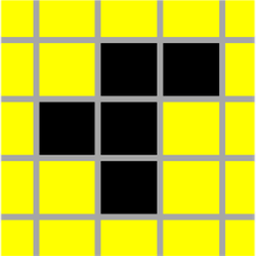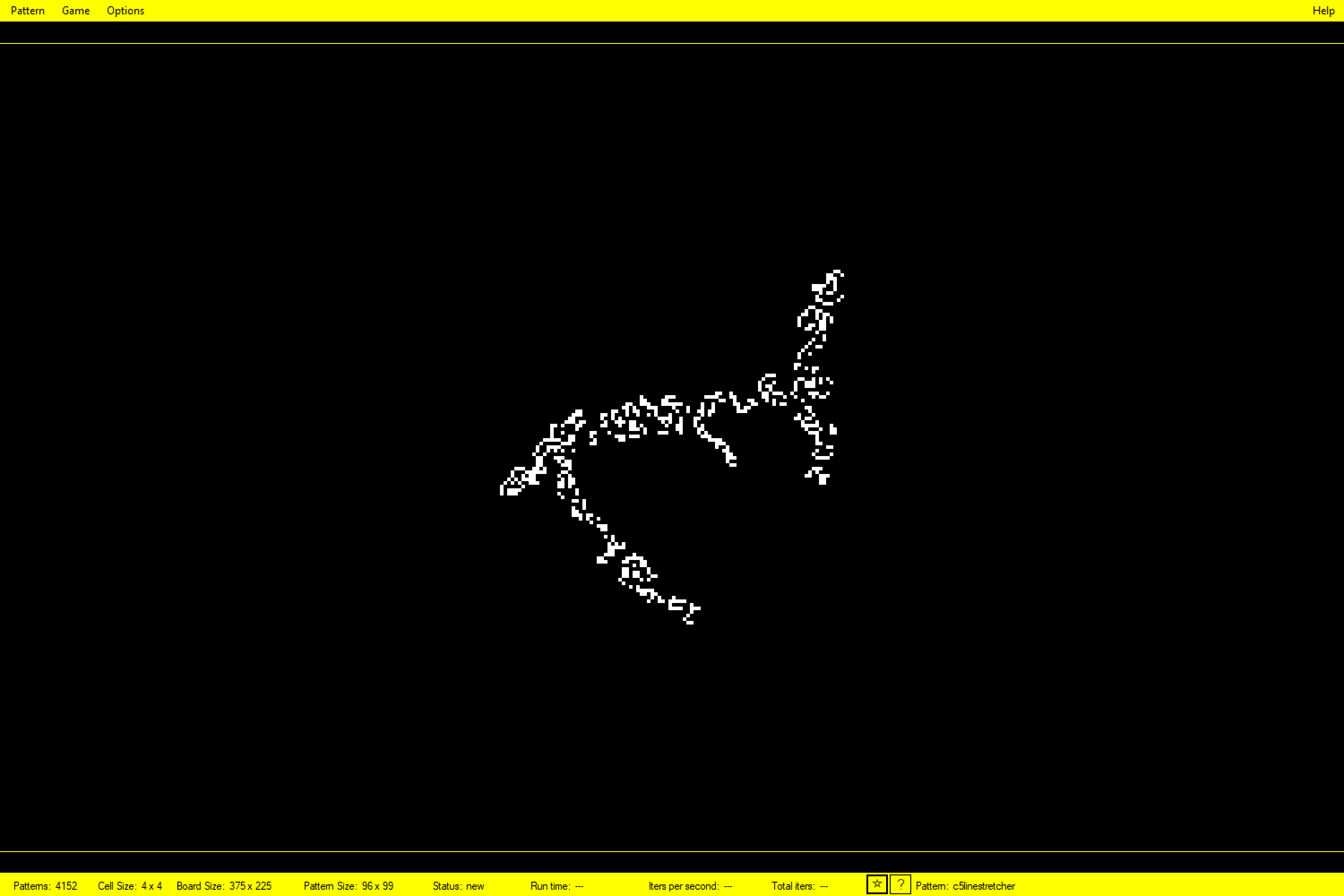Game Of Life

According to
Wikipedia, “The
Game of Life [GoL],
also known simply as
Life, is a
cellular automaton
devised by the British mathematician
John Horton Conway
in 1970. It is a
zero-player game, meaning that its evolu-
tion is determined by its initial state, requiring no further input. One interacts with the Game of Life by creating
an initial configuration and observing how it evolves.” The rules of this iconic game, which is ‘played’ on a
2-dimensional grid (or
board) of square
cells, are quite simple. Each cell can be either
dead or
alive, indicated as (e.g.) black and white, respectively. Given the configuration of cells on the board (the
pattern or current
generation), the next generation is determined by applying the
following
transition rule to each cell:
- An alive cell with two or three alive neighbors stays alive, simulating survival.
- All other alive cells die, simulating under— and overpopulation.
- A dead cell with three alive neighbors becomes alive, simulating reproduction.
- All other dead cells stay dead.
The attractiveness of GoL stems from the complexity that can arise from applying these simple rules to a 2-dimensional
pattern of 2-state cells. Patterns range from the simple 3X3-cell
glider that has 5 alive and 3 dead cells and moves in a straight line by iterating through 4 states, to the
1714x1647-cell
Turing machine. GoL is indeed
"
Turing complete and can simulate a
universal constructor or any other
Turing machine."
Despite their simplicity, cellular automata can exhibit such complex behavior that it led British computer scientist
physicist, and businessman
Stephen Wolfram to posit
computation as an organizing principle of science (cf. his 2002 book
A New Kind of Science) and to later even use
cellular automata as the basis for a fundamental theory of physics (cf. his 2020 book
A Project
to Find the Fundamental Theory of Physics or the associated
project site).
Many online and offline GoL implementations exist. Perhaps the quintessential one is
Golly, which actually goes well beyond GoL in that it supports cellular
automata with up to 256 states, multiple colors, different transition rules, and a variety of algorithms for
implementing these rules. My motivation for writing yet another GoL app was not competing with or improving on
existing ones — how could I ever presume to beat Golly’s
Hashlife
algorithm that computes 6,366,548,773,467,669,985,195,496,000 generations of a Turing machine in less than 30 seconds
on an Intel Core Duo 2GHZ CPU? My motivation was twofold:
- Explore how fast GoL can be when implemented in Visual C# in a straightforward manner, i.e., without the use
of advanced algorithms. I started from an
open source implementation written by Jon Skeet in 2008 to explore parallelism in C#. Speeding this up by
decoupling board iterations from the user interface and using pointers in a few key places made the app fast
enough for my next purpose:
- Entertainment. While coding up the app was entertainment in and of itself, I wanted an ‘auto-play’ mode in
which patterns randomly selected from a library are played back-to-back, so I can see ‘Game Of Life’ as art
on the wall. The app has to run on an
Intel® Compute Stick STK2m3W64CC that drives the screen, with pattern iteration visibly attractive, i.e.,
not extremely fast but also not exceedingly slow. The result is that the ‘c5linestretcher’ pattern depicted
below evolves at up to 560 iterations per second (ips) with one pixel per cell on a 1900x1025 board. Likewise,
a random 500x500-pixel pattern evolves at up to 170 ips. For comparison, these patterns evolve at up to 2,430
ips and up to 620 ips, respectively, on a 1500x950 board on my development machine (a
Microsoft Surface Book 2).
As a final remark, while it is captivating to watch patterns evolve, I also find it quite intriguing to follow the
evolution of a screen full of random cells. While the ones I observed eventually all reached a steady state, a single remaining glider
can ignite a big region of activity. Fascinating.
Screenshot


